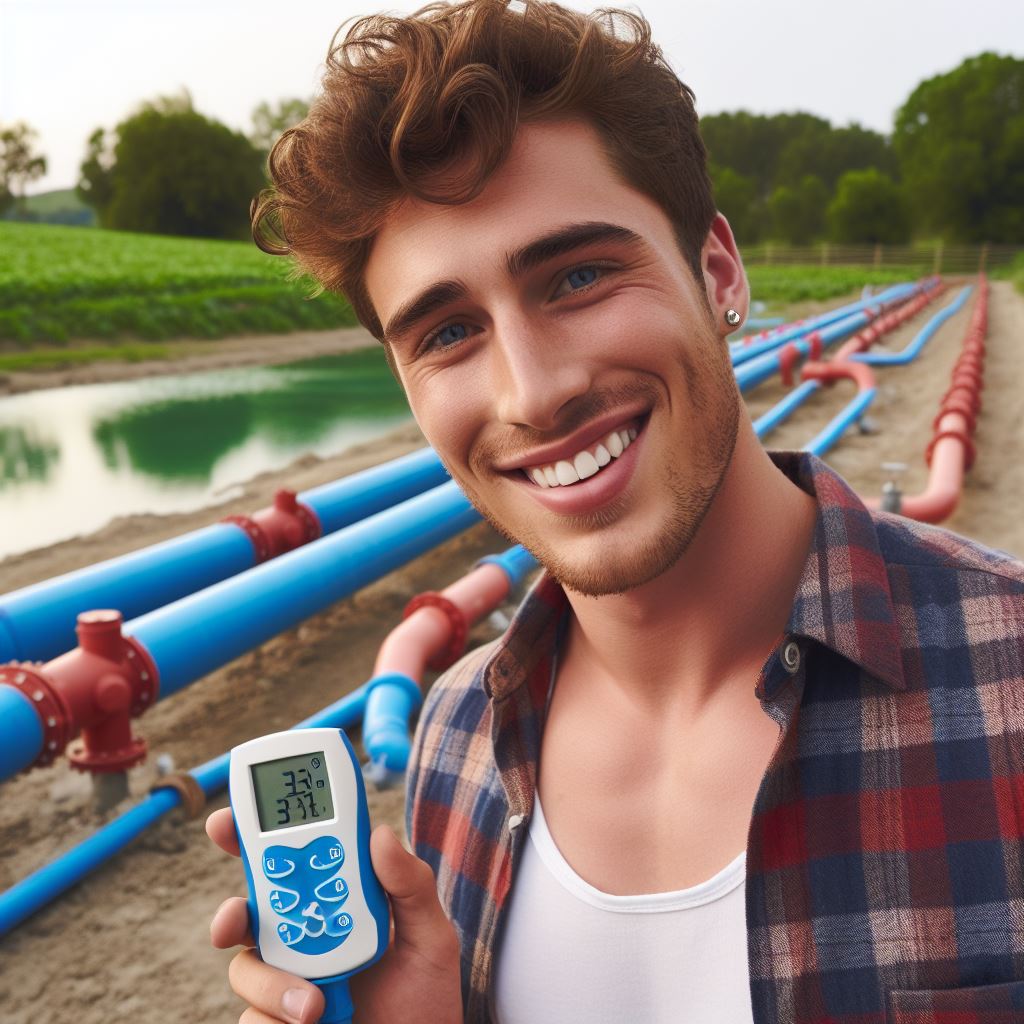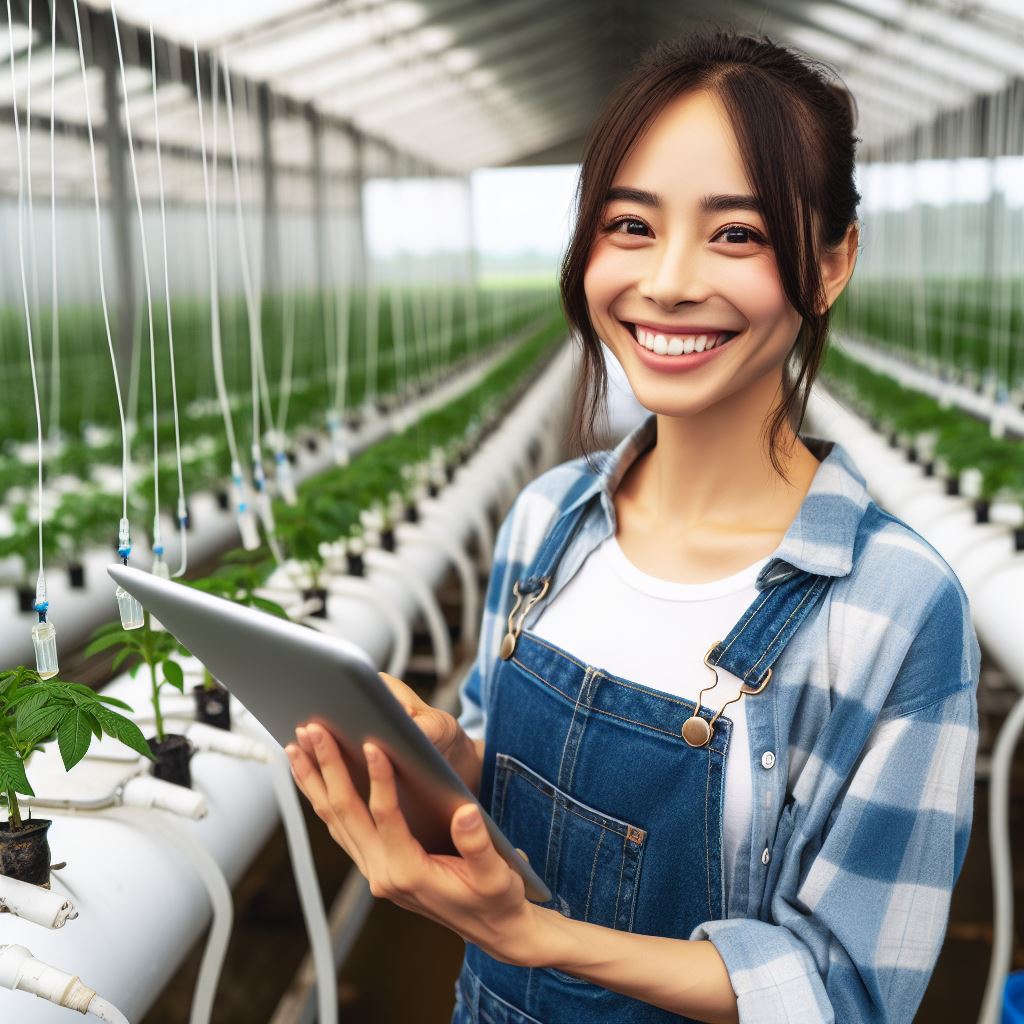Introduction
Brief overview of the current climate trends
Rising Temps Impact on Farm Water Sources.
The global climate is steadily warming, with average temperatures rising at an alarming rate.
This change is attributed to human activities, primarily the burning of fossil fuels, which release greenhouse gases into the atmosphere.
As a result, extreme weather events such as heatwaves, droughts, and storms are becoming more frequent and intense.
Importance of addressing the impact of rising temperatures on farm water sources
One critical issue affected by rising temperatures is the availability and quality of water sources for agricultural purposes.
Farms rely heavily on water for irrigation, livestock, and crop production.
However, the changing climate patterns are disrupting the hydrological cycles, causing irregular precipitation patterns and affecting groundwater recharge.
The impact of rising temperatures on farm water sources poses severe challenges for agricultural productivity and sustainability.
Droughts, for instance, can lead to water scarcity and reduce crop yields, resulting in food shortages and price hikes.
Furthermore, water scarcity can escalate conflicts among farmers, communities, and even nations.
Addressing these challenges is crucial to ensure a stable and secure food supply for a growing global population.
Sustainable management practices, such as efficient irrigation techniques, soil conservation measures, and water recycling systems, need to be implemented.
Additionally, innovative technologies that enable farmers to monitor and optimize water usage should be promoted.
By adapting and mitigating the effects of rising temperatures on farm water sources, we can safeguard the agricultural sector’s resilience, minimize environmental degradation, and preserve water resources for future generations.
Collective actions at the local, national, and global levels are needed to address this pressing issue and secure a sustainable future for agriculture.
Understanding the Impact
Explanation of the correlation between rising temperatures and water sources
The increase in temperatures has a direct impact on water sources used in farming.
As temperatures rise, water evaporates at a faster rate from surface water bodies.
This evaporation leads to a decrease in the availability of water for agricultural use.
Besides direct effects, rising temperatures also lead to changes in precipitation patterns.
Changes in precipitation result in irregular distribution of rainfall, affecting water sources.
Unpredictable rainfall patterns make it difficult for farmers to plan irrigation and water management.
Moreover, rising temperatures contribute to the decreased availability of surface water.
Surface water bodies, such as rivers and lakes, tend to dry up due to increased evaporation.
This reduction in surface water availability puts additional pressure on farmers’ water sources.
Transform Your Agribusiness
Unlock your farm's potential with expert advice tailored to your needs. Get actionable steps that drive real results.
Get StartedFurthermore, rising temperatures also affect groundwater levels, which farmers heavily rely on.
Higher temperatures cause an increase in evaporation of moisture from the soil and groundwater.
This results in reduced groundwater levels, making it challenging for farmers to access water.
Discussion on the direct and indirect effects on farm water sources
1. Increased evaporation rates
Rising temperatures lead to increased evaporation rates from surface water bodies and damp soil.
This phenomenon reduces the overall water availability for agricultural purposes.
2. Changes in precipitation patterns
Higher temperatures cause shifts in precipitation patterns, leading to erratic rainfall patterns.
Uneven distribution and unpredictable timing of rainfall pose challenges for farmers.
Unreliable precipitation makes it difficult to plan irrigation schedules and water resource management.
3. Decreased availability of surface water
Rising temperatures intensify evaporation, reducing the availability of surface water sources.
Decreased surface water availability puts pressure on already limited water sources for farming.
4. Reduced groundwater levels
Increased evaporation due to rising temperatures leads to a drop in groundwater levels.
Lower groundwater levels make it challenging for farmers to access sufficient water for irrigation.
Farmers may face difficulties in maintaining crop growth and productivity.
In fact, the correlation between rising temperatures and water sources is profound.
The direct effects include increased evaporation rates and changes in precipitation patterns.
Indirect effects manifest as decreased availability of surface water and reduced groundwater levels.
Understanding these impacts is crucial for implementing sustainable water management strategies.
Farmers must adapt to the changing climate to secure the future of agriculture.
Read: Future Foods: Climate-Resilient Crops
Challenges for Farmers
Limited water availability for irrigation purposes
- Farmers face the challenge of dealing with limited water availability for irrigation.
- This issue arises due to rising temperatures and changes in weather patterns.
- In many regions, the availability of water for irrigation purposes continues to decline.
- Farmers are finding it increasingly difficult to meet the water demands of their crops.
- Limited water availability can lead to reduced yields and lower quality of produce.
Increased costs of accessing alternative water sources
- As traditional water sources become scarce, farmers are forced to find alternative sources.
- These alternative sources often require additional infrastructure and equipment.
- Digging wells or installing pumps can be costly and time-consuming.
- Farmers are left with no choice but to bear the increased costs of accessing alternative water sources.
- Higher costs of water acquisition can significantly impact the profitability of farm operations.
Threats to crop productivity and farm profitability
- Rising temperatures and limited water availability pose a significant threat to crop productivity.
- Crops are more susceptible to heat stress and water deficiency under such conditions.
- Reduced yields and crop failure can lead to financial losses for farmers.
- With declining productivity, farm profitability also takes a hit.
- Farmers must implement strategies to minimize the impact on crop productivity and profitability.
Vulnerabilities for livestock and other farm animals
- Rising temperatures and limited access to water create vulnerabilities for livestock and farm animals.
- Animals may suffer from heat stress and dehydration in the absence of adequate water sources.
- Lack of water can also affect the quality and availability of forage for livestock.
- Farmers must ensure that their animals have access to sufficient water and take measures to prevent heat-related illnesses.
- Neglecting the needs of livestock and other farm animals can have dire consequences for their health and well-being.
In short, rising temperatures and their impact on water sources present several challenges for farmers.
From limited water availability for irrigation to increased costs of accessing alternative sources,
farmers must navigate these obstacles to ensure crop productivity and farm profitability.
The vulnerabilities faced by livestock and other farm animals also require special attention.
It is crucial for farmers to adapt to these changing conditions and implement sustainable water management practices.
Showcase Your Farming Business
Publish your professional farming services profile on our blog for a one-time fee of $200 and reach a dedicated audience of farmers and agribusiness owners.
Publish Your ProfileOnly through proactive measures can farmers mitigate the negative effects of rising temperatures on their livelihoods.
Read: Agroforestry: A Climate Smart Approach

Strategies for Mitigation
Climate change and rising temperatures have had a significant impact on water sources for farms.
As temperatures continue to rise, the availability and quality of water resources have been affected, posing challenges for agricultural activities.
However, there are strategies that farmers can implement to mitigate these issues and ensure a sustainable water supply for their farms.
Implementing efficient irrigation techniques
Implementing efficient irrigation techniques is crucial in optimizing water usage and reducing wastage.
Drip irrigation systems are effective methods that deliver water directly to plant roots, minimizing evaporation.
Precision watering techniques involve using technology to monitor soil moisture levels and deliver water only when necessary.
Water conservation practices
Water conservation practices are essential for reducing water consumption on farms.
Proper soil management techniques, such as regular soil testing and appropriate fertilization, can improve water retention in the soil, reducing the need for excessive irrigation.
Mulching, covering the soil with organic materials like straw or wood chips, helps to conserve moisture and prevent evaporation.
Crop rotation, alternating crops from season to season, can also help maintain soil health and reduce water demand.
Investing in water storage and capture systems
Investing in water storage and capture systems can provide farmers with alternative sources of water.
Rainwater harvesting involves collecting and storing rainfall for future use, especially during dry periods.
Building reservoirs and ponds on farms can store water for irrigation, reducing dependency on external water sources.
Collaborative efforts and policies
Collaborative efforts and policies are crucial in addressing water scarcity issues.
Water sharing agreements between farmers promote efficient water distribution, ensuring fair access for all.
Government initiatives are essential in supporting sustainable agriculture by providing incentives and funding for water conservation practices, research, and infrastructure development.
By implementing these strategies, farmers can effectively mitigate the impact of rising temperatures on farm water sources and ensure long-term sustainability.
Efficient irrigation techniques and water conservation practices contribute to optimal water usage, reducing stress on natural water resources.
Investing in water storage systems and promoting collaborative efforts and policies can further enhance water availability and security for agricultural activities.
Adapting to the challenges posed by rising temperatures and climate change requires proactive measures from farmers, policymakers, and society as a whole.
By embracing these mitigation strategies, we can work towards a more resilient and sustainable agricultural sector, safeguarding food production and protecting our precious water resources for future generations.
Read: Soil Conservation Techniques in Drought
Explore Further: US Agri Laws & Climate: Finding the Balance
Delve into the Subject: Crops vs. Climate: Diversity for Stability
Case Studies
Success stories of farmers adapting to changing water sources.
- John Thompson, a farmer from Nebraska, successfully transitioned to drip irrigation to conserve water.
- Sarah Martinez, an organic farmer in California, implemented water recycling systems to mitigate water scarcity.
- Michael Anderson, a dairy farmer in Wisconsin, integrated precision agriculture technologies to optimize water usage.
Strategies they implemented and the outcomes achieved.
- John Thompson installed a drip irrigation system, reducing water consumption by 30% and increasing crop yield.
- Sarah Martinez installed water recycling systems, decreasing reliance on external water sources by 50%.
- Michael Anderson used precision agriculture technologies, reducing water waste by 40% and improving dairy production.
Inspiration and learnings for other farmers.
These success stories demonstrate that adapting to changing water sources is possible and beneficial. Farmers can:
- Invest in efficient irrigation systems like drip irrigation to conserve water and enhance crop productivity.
- Implement water recycling systems to reduce dependence on external water sources and maintain sustainable farming practices.
- Utilize precision agriculture technologies for optimal water usage, resulting in improved productivity and reduced environmental impact.
- Stay updated on emerging technologies and innovations in water management to stay ahead in adapting to changing water sources.
By learning from these successful farmers, others can overcome water-related challenges and create more resilient farming systems.
Read: Smart Irrigation in Dry Farming
Conclusion
In this blog post, we’ve highlighted the pressing issue of rising temperatures and their detrimental effects on farm water sources.
With temperatures on the rise, the demand for water in agriculture is increasing, putting a strain on already limited water resources.
To address this challenge, it is imperative for farmers and stakeholders to take proactive measures.
By implementing water-saving techniques, adopting efficient irrigation practices, and investing in water management infrastructure, the impact of rising temperatures on farm water sources can be minimized.
Furthermore, collaboration among farmers, researchers, policymakers, and community members is essential.
By working together and sharing knowledge, innovative solutions can be developed to ensure the long-term sustainability of farm water sources.
It is only through collective effort and a commitment to action that we can safeguard the future of agriculture amidst changing climatic conditions.




